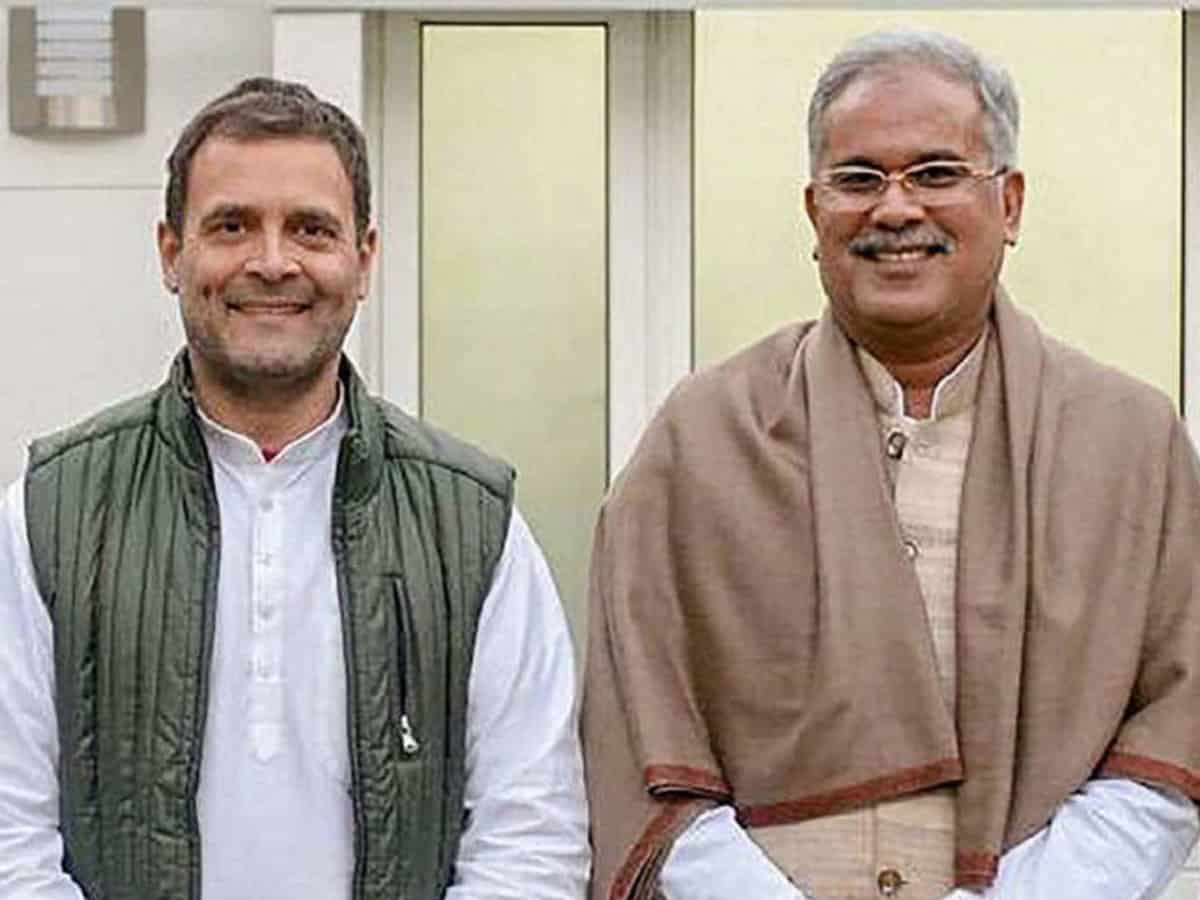
Of the five states going to polls in the coming weeks Chhattisgarh is the one in which the Indian National Congress is best placed. It is expected to give a tough fight in neighbouring Madhya Pradesh and Rajasthan, the two other states of the Hindi belt where the Bharatiya Janata Party has a strong presence.
Except for Telangana, Muslims do not politically matter in the rest four poll-bound states. Their population in Chhattisgarh is only 2.02% while Christians and Hindus form 1.92% and 93.25% respectively. Yet the BJP, which claims to be the champion of the Hindu cause was wiped out in the December 2018 Assembly election in which Congress won 68 seats against 15 by the BJP in 90-member House. The gap in vote share was 10%.
However, five months later the saffron party bounced back winning nine out of 11 Lok Sabha seats in May 2019. Thus, once again much is at stake for the BJP so far, its claim to be the sole representative of Hindus is concerned. What many BJP-watchers fear most is that the saffron party may not repeat its 2019 performance in 2024, if it loses the Assembly poll. The revival of Congress across India after Rahul Gandhi’s Bharat Jodo Yatra and the waning Modi magic may be the main reasons.
The fifth state, Mizoram, which goes to the poll has about 90% Christian population. Though the BJP is a part of the ruling alliance there, the post-May 3 violence in neighbouring Manipur has completely changed the political scenario and now its chief minister is declining to share the dais with Prime Minister Narendra Modi.
Left extremism
Chhattisgarh, otherwise known as the rice bowl of India, is the state where Left extremist forces are still strong. The first armed struggle by the Communists started in neighbouring Telangana on the eve of
independence of India, and when the region was still a part of Nizam’s Hyderabad.
The Communist Party of India’s insurrection was brutally crushed by the Indian government after the annexation of Hyderabad. The party virtually gave up armed resistance and took part in the 1951-52 Lok Sabha election. The CPI won 16 seats and emerged as the largest opposition party in the Lok Sabha. The newly formed Bharatiya Jan Sangh, the earliest version of the BJP, could get only three seats.
Many experts on Naxal activities are of the view that Chhattisgarh may prove as the last bastion of the Maoists who have carried out several high-profile attacks on security personnel ever since it was carved out of Madhya Pradesh in November 2000. The killing of 55 security men and 76 CRPF personnel on March 14, 2007, and April 6, 2010, respectively are two such instances. Even in Jammu and Kashmir not so many security personnel were ever killed in one incident. Many other such massacres took place. In one such assault on May 26, 2013, 28 people, including top Congress leaders were killed. Former Union minister Vidya Charan Shukla was among them. The BJP was in power in the state in those years (2003-2018).
The Naxal violence seems to be receding after the victory of the Congress party in the December 2018 Assembly election. Some experts give credit to the Chhattisgarh chief minister Bhupesh Baghel, a backward caste (Kurmi) leader, who introduced several welfare schemes. He also increased the minimum support price for the paddy farmers.
But the BJP government at the Centre never fails to take credit for the decline in Left-wing violence. The saffron party’s claim can be taken with a pinch of salt as between May 2014 and December 2018 there was double-engine government here yet the situation at the ground level had hardly changed.
But the biggest question is how the armed struggle survived so
long in Chhattisgarh when the state has no international border and no coast of its own. This is very much unlike Jammu and Kashmir and North-East. So, how is it that arms continue to reach the heart of India? Or is it that they get arms from within the country?
Chinese hand?
When Naxalism took North Bengal by storm in the Naxalbari sub-division of the Darjeeling district in the 1960s it was alleged that China provided a lot of moral and material help as the region lay very close to the international boundary. But when the Naxals were crushed in West Bengal they fled to undivided Bihar, which borders Nepal. From the Telangana rebellion of 1947-49 to the 1990s Left extremism was essentially a struggle against feudal lords. But after the creation of new states Jharkhand and Chhattisgarh in November 2000 the very nature of struggle changed. The Peoples War Group of the then Andhra Pradesh and Maoists Communist Centre of Jharkhand, Odisha Bihar, West Bengal, and Chhattisgarh joined hands to form CPI (Maoist). Now the struggle is against the corporate houses and coal mafia.
As Jharkhand, Odisha, and Chhattisgarh have a lot of mines and industries the whole profile of Left extremism has changed. Various corporate houses have a big interest in this region.
As dynamite and explosives are used in coal mines, they easily get smuggled and reach the hands of Maoists. These explosives are used for laying landmines and causing blasts on the roads. It has been observed that most of the casualties took place due to landmine explosions.
While Jharkhand, Odisha, and Telangana have managed to overcome the Maoists’ challenge in the heart of India, Adivasis of Chhattisgarh, especially in the erstwhile undivided Bastar district, are still up in arms.
Challenge before BJP
Though the BJP claims to be the biggest champion of Adivasis (Scheduled Tribes), Congress, and other parties have made big inroads into this vote bank. In Jharkhand, where their population is around 26.3% the Jharkhand Mukti Morcha-Congress-RJD alliance has been in power since January 2020. In Chhattisgarh, where they form 30.62% of the population the Congress won 25 out of 29 ST reserved seats in the 2018 election.
The state has about 45% backward castes and 12.8% Scheduled Castes voters. The upper castes, on which the saffron party rely most, has an estimated population of less than eight percent.
Baghel has emerged as a powerful OBC leader and the BJP has no match to him.
In the 2019 Lok Sabha poll Congress could not repeat the Assembly performance as the party had less than five months to implement its election promises. Now the chief minister had made the party’s war machine much stronger. The BJP’s concern is not confined to the Assembly poll but is anxious about its performance in next year’s Lok Sabha poll. The virtual absence of Muslim votes has made the task more difficult as there is no scope for communal polarization.

